4 ways you can celebrate Earth Day while you #stayhomewithgeneco
- Home
- Residential
- Blog
- Archive by Category "Knowledge" (
- Page 9 )
[Post Date]
4 ways you can celebrate Earth Day while you #stayhomewithgeneco

Earth Day 2020 marks the 50th anniversary of the occasion, but this year’s celebration will be starkly different.
The current COVID-19 situation has seen the world implement safe distancing measures, requiring us to stay indoors to protect ourselves and the community. While the focus is now on this outbreak, global warming is still very much a long-term challenge for all us. There is still a need to maintain our emphasis in raising environmental awareness.
Although it was traditionally gathered outside at various events to commemorate Earth Day since 1970, we can still act together – from our homes – for a more sustainable future. As the world continues to battle COVID-19 and climate change, be a part of Earth Day to honour our planet.
Here are four ways you can do so while staying at home:
1. Plan a meal with locally sourced ingredients
This Earth Day, why not opt to use locally grown produce and ingredients in your cooking adventure?
A pioneer in the Singapore urban farming scene, Comcrop – partner of ChangeMakersSG, uses advanced hydroponic technology to grow their produce without the use of harmful pesticides or herbicides. Produce grown locally have a lower carbon footprint, as compared to imported vegetables. This translates to less food loss through the supply chain while at the same time supporting local businesses.

2. Create your own Food Scrap Garden
Growing vegetables from your home kitchen is actually easier than you think! Anyone can start your own food scrap garden by growing vegetable parts you usually dispose. This is a great way to reinforce the sustainable living concepts of recycling and reusing for the entire family.
To learn more on how to make your own compost, check out another partner of our ChangeMakersSG, Cultivate Central – a local social enterprise that seeks to empower people to live sustainably. They believe that there is abundance in small spaces, and it is possible for everyone to grow food right from our homes.
You will be surprised that some of the vegetables you can grow in your food scrap garden include bok choy, avocados, celery and onions! The possibilities are endless, and it may just be the project that you need while staying in.
3. Pick a Movie with an Eco-friendly Theme
Over the last 50 years, numerous films and documentaries have shared deeper insights to global warming and climate change. Pick a family movie with an environmentalism theme for your next movie night to inspire your little ones on this day. It may spark the power to create change inside of them to do good to the Earth! Some of our recommendations include – March of the Penguins and Wall-E.

4. Get Crafting with some Green Projects
Creating sustainable art is an excellent way to spend time indoors and still connect with the Earth. Repurpose materials from around the house and encourage the kids to be creative in what they can make with it. Here’s an idea for the kids to try – create their own stationery holder using toilet rolls, or put together a simple no-sew mask!
For more inspirations, Geneco has launched Power Famtime Fridays as part of our #stayhomewithgeneco series on Instagram! Stand to win $100 worth of Dairy Farm vouchers by sharing with us how you are bonding together as a family over some green crafts. 10 lucky winners will be selected on May 8. Find out more here.
References:
- Elangovan, N. (2020, June 5) Singapore households generated additional 1,334 tonnes of plastic waste during circuit breaker: Study, Today Online.
https://www.todayonline.com/singapore/singapore-households-generated-additional-1334-tonnes-plastic-waste-during-circuit-breaker
Image Credits: Nylon Coffee Roasters
Source: The Sustainability Project
From vitamins to staying stress-free: Tips for staying virus-free this flu season
- Home
- Residential
- Blog
- Archive by Category "Knowledge" (
- Page 9 )
[Post Date]
From vitamins to staying stress-free: Tips for staying virus-free this flu season

“Do you have enough face masks?” has become a common question since the outbreak of the novel coronavirus, which is now known as COVID-19. Spreading rapidly, the virus is the top priority across various cities with many following the tips issued by the World Health Organization on protection and safety.
We’ve all seen listicles advocating for the wearing of masks (if you’re unwell) in crowded places, washing your hands and the use of hand sanitisers. Outside of that, however, what else can we do to stay healthy – and calm – during the flu season, especially in the midst of a coronavirus outbreak?
To save all of us from some worry, we put together this guide on best practices and top tips on how we can stay healthy during an outbreak.
Maintain regular health checks and get vaccinated!
It’s not too late to get the flu vaccine, but it’s important to get it when you’re healthy. This is especially important for the young, the elderly and those with compromised immune systems.
While it may not prevent coronavirus, it will help build your immunity system against the more common seasonal influenzas—which will also reduce the risk of pneumonia or other complications.
It’s also important to maintain regular check-ups—at least on an annual basis. Such regular check-ups can help identify health issues early, before they become a problem. They also give you the best chance for getting the right treatment quickly, avoiding any further complications.
Watch your diet
Did you know: the top three nutrients to ensure a strong immune system are vitamin C, zinc and iron? The benefits of vitamin C to boost immunity are well documented, and it works best as a preventive measure, rather than a reactive one—meaning that people should take it before the onset of cold or flu symptoms. Vitamin C can be easily found in its natural form, within fruit and vegetable sources such as oranges, grapefruit, kiwis, bell peppers and broccoli!
Additionally, a zinc deficiency is also associated with increased susceptibility to pneumonia and other infections in children and the elderly—but the nutrient can be easily found in poultry, breakfast cereals, beans, as well as nuts.

Breath through your nose
This might sound silly, but breathing through your nose instead of your mouth is one of the best things you can do when there is a virus going around. Air entering the body through the nose is warmed, humidified and filtered before it gets to the lungs—making a huge difference in terms of purifying the air. Even when wearing a mask (which can get hot and difficult sometimes), it’s best to continue to breathe through the nose.
Sleep well, and take time out for yourself
Ensuring that you get enough sleep is important as sleep is the body’s most effective method of recovering, which is a key tenet in keeping healthy.
A lack of sleep can affect your immune system, with studies showing that people who don’t get enough sleep are more likely to fall sick if they are exposed to a virus. In addition, infection-fighting antibodies and cells are reduced during periods when you don’t get enough sleep.
So, your body needs sleep to fight infectious diseases. Long-term lack of sleep also increases your risk of obesity, diabetes, and heart and blood vessel (cardiovascular) disease.

It’s also important to take time to do the things you love, whether it is yoga, cooking, or an art class. Stress can inhibit some of the immune functions, and taking time out for yourself is a way to reduce that stress.
Move!
“The fitter you are, the stronger your immune system.”

Regular exercise such as aerobics and walking can boost the immune system, with a study finding that “feeling fit and being active cut the risk of having a cold by nearly 50%”. In addition, those who exercise regularly also recover more quickly.
Exercise helps balance stress hormones such as cortisol (which in large amounts, is a hormone that suppresses your immune function), and changes T-cells, a type of white blood cell, to the ones that are better at fighting disease.
With the onset of the COVID-19 across various cities, it is important to remember that we all have a part to play. From showing care and support to healthcare workers at the frontline during this time, or being vigilant in ensuring our own health conditions are accounted for, we can overcome this crisis together as a nation.
References:
- Elangovan, N. (2020, June 5) Singapore households generated additional 1,334 tonnes of plastic waste during circuit breaker: Study, Today Online.
https://www.todayonline.com/singapore/singapore-households-generated-additional-1334-tonnes-plastic-waste-during-circuit-breaker
Image Credits: Nylon Coffee Roasters
Source: The Sustainability Project
Here’s how you can have an Ethical and Sustainable Valentine’s Day
- Home
- Residential
- Blog
- Archive by Category "Knowledge" (
- Page 9 )
[Post Date]
Here’s how you can have an Ethical and Sustainable Valentine’s Day

It is Valentine’s Day and love is in the air! It’s a day to celebrate love in all forms – and to show your appreciation not just to your sweetheart, but to your family and friends as well.
Before rushing out to get a bouquet of roses or plush red teddy bears that’ll just end up gathering dust, there are many other thoughtful ways to spend Valentine’s Day with those you love – without creating waste and in an ethical manner.
At the end of the day, Valentine’s Day is simply about being with the one you love.
Dine in
Valentine’s Day is one of the most notoriously difficult times to get a dinner reservation at many restaurants. Instead of competing with the crowd, why not have a nice evening in, and spend time cooking a meal together with your partner?
Not only will this allow you guys to spend some quality time together on this special day, but it also lets you skip the unnecessary restaurant reservation stress and enjoy each other’s company, just as the day intended for it to be.

By choosing to dine in, you get to curate your own menu according to your taste and preferences. Conscious consumption choices can be made when you get to choose the meat you use. This is so you can either pick a local, sustainable option instead of something that has been shipped in from somewhere you may not know. You can even opt to mix it up and keep some or all of the spread vegan friendly. This is a wonderful way to make your Valentine’s day dinner more sustainable as well.
To complete this cozy home dining experience, set the ambiance of your dinner table with soy wax candles to make your Valentine’s Day dinner extra special.
Create a Special Memory
Holidays and special seasons often create a lot of waste and Valentine’s Day is no exception. Last three years, spending on flowers has seen an increase by 102% in Singapore during this season. Shopping contributes to a big chunk of waste that is generated for this day and it does not have to be that way should you opt for experiential gifts instead.
Experiential gifts allow recipients to experience something they have never done before. Similar to the experience of having to prepare a meal together, a shared experience shuts out all other distractions, and allows both parties to just enjoy the company of each other. Such experiences often lead to fond memories, which will be special and unique to just the two of you.
In fact, the experience doesn’t even have to be expensive – there are plenty of local events and places to go that won’t burn a whole in your pocket this Valentine’s Day.
Fair-Trade Chocolate
Chocolates and Valentine’s Day always seem to go together. Whatever shape of flavour this cocoa delight comes in, chocolates are touted as the love food that sets the mood for romance during this celebration. Unfortunately, not everything behind the production of chocolate is as good as its taste with the common use of child labour in its production.

This Valentine’s Day skip the conventional chocolate and opt for some Fair-Trade options instead. Consumers can influence the chocolate industry, and reading labels is the best place to start.
Save it for Later
Rather than spending money for the sake of this special day and potentially wasting it on a gift that your partner may not even like, why not gift them with your very own “Valentine’s Day” coupons. This way, they can activate that much needed massage after a long day of work or enlist your help with a sink full of dirty dishes, any day of the year.
It’s a great way to remind one another that a celebration of one another may not require physical gifts, but the acts you do for one another.
Show that Love Every Month
Thanks to the internet, last minute gifts are not limited to instant online gift cards for that special someone. Subscription services are great options and can be purchased anytime as well. What makes it even better is that there are all kinds for you to choose from based on your partner’s interests.
From workout studios, music and movies, to even coffee, you don’t need to search high and low for that one special gift for your loved one. This way, you even get to use it as an expression of your love on a monthly basis.
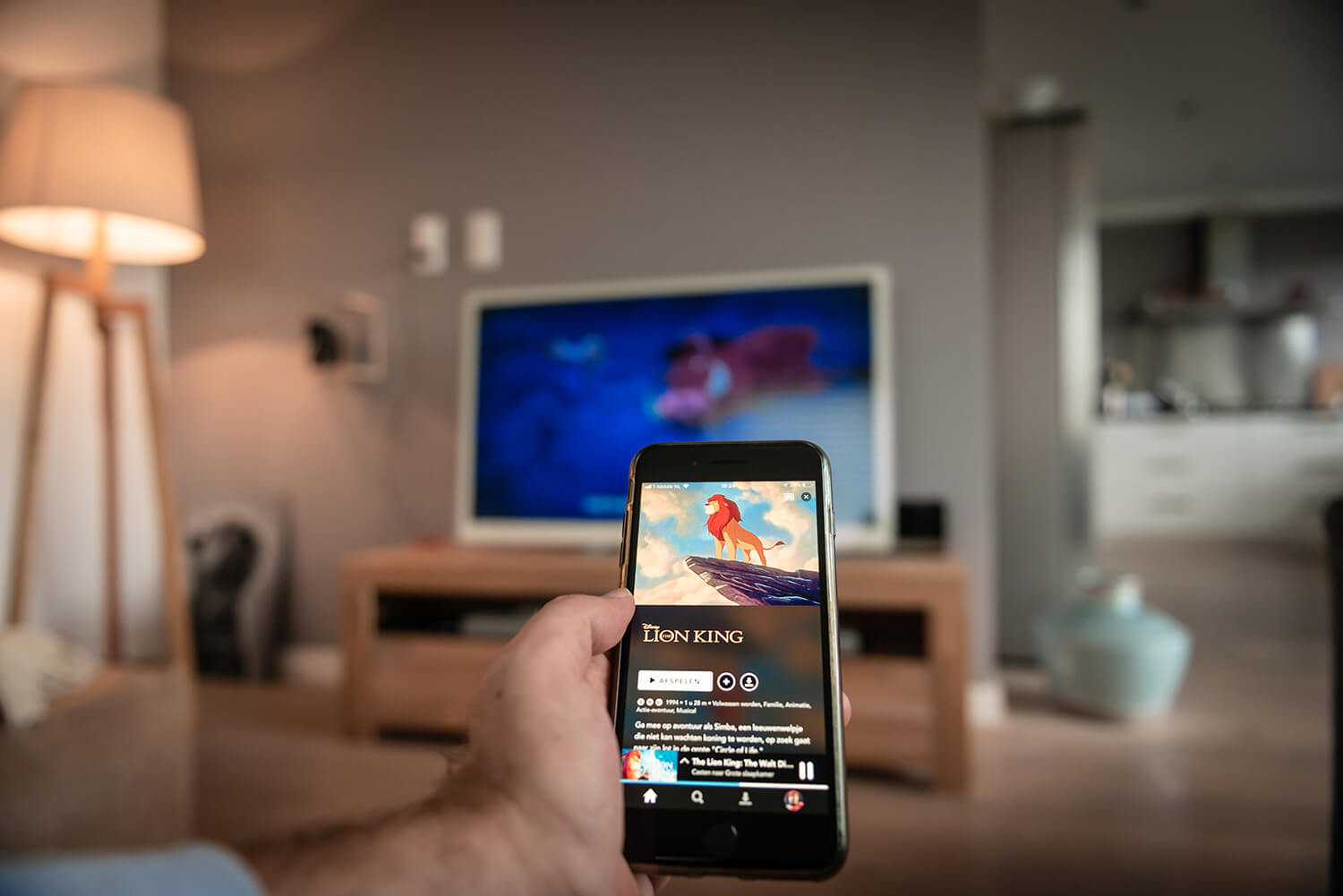
The best gifts come from the heart, and when they’re handmade or non-material, they’re showing love to Mother Nature too. You’ll find added romance in the non-commercial approach, whichever route you choose for keeping things a little greener this Valentine’s Day.
References:
- Elangovan, N. (2020, June 5) Singapore households generated additional 1,334 tonnes of plastic waste during circuit breaker: Study, Today Online.
https://www.todayonline.com/singapore/singapore-households-generated-additional-1334-tonnes-plastic-waste-during-circuit-breaker
Image Credits: Nylon Coffee Roasters
Source: The Sustainability Project
Sustainable Packing Tips to Kickstart your Next Vacation
- Home
- Residential
- Blog
- Archive by Category "Knowledge" (
- Page 9 )
[Post Date]
Sustainable Packing Tips to Kickstart your Next Vacation

We might have just celebrated the Lunar New Year, but Singaporeans are already looking forward to the next long weekend (psst, the next one is Good Friday).
With 6 more long weekends to go till the end of 2020, it is the perfect chance to take advantage of it and take that short trip you have been dreaming of. The following packing tips may come in handy to ensure that you stay on top of your packing game, while practicing sustainable living habits.
Roll instead of fold
When packing your suitcase, the goal is to maximise the space within your luggage as much as possible. By rolling your clothes instead of folding them, you will not only free up extra luggage space, but also protect your clothes from wrinkles.

Opting for non-toxic sunscreen
Sunscreen may be the most important factor in ensuring our skin is protected, however they are contributing to the damage to coral reefs. The chemicals from sunscreen have been proven to damage coral reefs – which are essential to ocean ecosystems. You may want to avoid sunscreens with Oxybenzone as it makes the corals bleach quicker, eventually turning white and dying.
Choose mineral-based sunscreens instead of chemical-based sunscreens. They reflect rays and work as a shield as opposed to the chemical sunscreens that our body absorbs. Common ingredients to lookout for in mineral-based sunscreens include Zinc Oxide and Titanium Dioxide. The particles of these two ingredients sit on top of the skin and block harmful UV rays. These ingredients are thus less harmful to corals and are not linked to coral bleaching.

Go digital with your documents
With the evolution of the internet and the ability to stay connected wherever, you can cut down on printed tickets and choose to download digital documents on your smartphone or laptop. The next time you are preparing for your trip, remember to download your destination maps and choose the e-ticket option.
Raise the bar
Travel-sized toiletries have always been the more convenient option when looking to pack for a holiday. However, they are known to be wasteful in terms of packaging, requiring five times more in terms of energy to be produced. Bringing along bar shampoo, conditioner, and soap is a great way to save space, money, and the environment (while also preventing any accidental spillages).
Bonus: bars last a lot longer than liquids, and they are way lighter!

Compostable Toothbrush
Eradicating unnecessary plastic can start with that one item you use every single day. Bamboo can be grown quickly and are fully biodegradable and antibacterial. The nature of the product allows it to be easily disassembled for proper disposal. Although the bristles are non-biodegradable, the handle can be up-cycled or composted at home, reducing the amount of waste generated.

Small Changes, Big Impacts
Making small changes to your travel habits today can have big impacts in the future. Include this as one of your new year resolutions this year for all your upcoming trips alongside with a few other easy swaps you can make as part of a Sustainable 2020.
References:
- Elangovan, N. (2020, June 5) Singapore households generated additional 1,334 tonnes of plastic waste during circuit breaker: Study, Today Online.
https://www.todayonline.com/singapore/singapore-households-generated-additional-1334-tonnes-plastic-waste-during-circuit-breaker
Image Credits: Nylon Coffee Roasters
Source: The Sustainability Project
8 Spring Cleaning Tips for the New Year
- Home
- Residential
- Blog
- Archive by Category "Knowledge" (
- Page 9 )
[Post Date]
8 Spring Cleaning Tips for the New Year

Chinese New Year is just around the corner, and tradition says that one of the most important priorities you have to focus on when it comes to bringing good fortune into your life is to be organized and clean.
Cleaning your entire home can be time-consuming, but this can be done by dedicating a single weekend to orchestrate a major cleaning session, or in various pockets of time—aiming to complete the tasks one step at a time. In fact, spring cleaning can be a fun family activity which doubles up as bonding time, as parents can also involve the children in the spring cleaning as well to allow them to take ownership of the space they live in.
Either way, it will be all worth it when you look up and see a clean and tidy environment for you and your family. To help you kick start your cleaning spree, here are 8 tips to help you organise your spring cleaning list.

1. Clear the decorations
With every festive holiday, we love to decorate our houses to bask in the festivity. From the Christmas tree by the living room to the Chinese couplets hanging by the door for prosperity and good luck, Singaporeans love dressing up their homes. However, once the holiday ends, we may find the decorations to be there a tat longer than they were meant to be.
Before the year gets busy, set some time to clear the decorations and make space for a clean and airy space for yourself and your family. Don’t wait till the next holiday to see the previous festive decorations still there

2. Use your old toothbrushes
Before you throw out your old toothbrushes, do remember that they can also serve as mini brushes that can help get the grime and dirt out from the smallest corners—so put them with your cleaning supplies.
You may find it exceptionally useful in cleaning every nook and cranny or your bathroom taps and between the grime between the kitchen tiles.
3. Clean your mattress and under it
On average, we spend 7 hours a day sleeping. This makes our mattress one of the most utilised furniture in our homes so thorough care should go into it to ensure we get a restful sleep in a clean space.
Watch out for the space under your bed and the gap between the headboard and the mattress. These areas are where we tend to overlook when spring cleaning. Take it a step further by opting to vacuum your bed as well. You will be surprised by the amount of dust and linen collected on it that may have negative impacts on your health should it be overlooked.

4. That’s got to go
The amount of stuff that we accumulate each year never fails to scare us at the end of the year when we spring clean. In 2016 alone, 150,000 tonnes of textile and leather waste was generated in Singapore, of which only seven per cent was recycled.

Instead, set aside bins to make the decluttering easier by categorising them into:
- Keep
- Donate/Sell
- Recycle
- Throw
Following which, do a stock take on your possessions and clear out what you do not need. You may even want to mull over your shopping habits over the year and work on taking steps towards a more conscious consumption. Not only will it prevent clutter at home, but also allows you to play a part to reduce unnecessary consumption.
5. Make your own homemade cleansers
Not only can you make them out of the ingredients right from your pantry, homemade cleansers also informs you of what actually goes into it to ensure the safety for you and your family.
Making your own is not all that tough. Find out how you can go natural with homemade cleaning cleansers and make some of your own.
6. Make a plan
Cleaning your home in a single day is an almost impossible task unless you have all hands on deck to help you out. A spring-cleaning checklist is necessary to ensure that all chores are covered, and the house is clean (and an organiser can come in handy!).
Your plan should include all the areas you are targeting to clean, the methods to use, and the tools needed. It should also allocate time for the tasks and resource delegation should you have some help.

7. Harness the goodness from the sun
Fight the dust mites on your bedding and pillows by using the sun. This is a great way to freshen all kinds of cushion, pillows, mattresses and comforters to get rid of all the dust mites and any lingering sweat odors. Do ensure the covers are taken off and regularly flip it after an hour on each side.
8. Leave the floor to the last
Cleaning of floors should come last after you have cleaned everything else including walls. Nobody wants dirt and dust all over vacuumed and mopped floor. By starting from top to bottom, you avoid making a mess on areas you have already cleaned.
Sustainable Resolutions for 2020
There is no better way to start the year with a clean space to ensure a clean mind. Here are some other ways you can make 2020 your year through these resolutions! Not only are you working towards a better you, but also to a better Earth for the future of your loved ones and yourself.
References:
- Elangovan, N. (2020, June 5) Singapore households generated additional 1,334 tonnes of plastic waste during circuit breaker: Study, Today Online.
https://www.todayonline.com/singapore/singapore-households-generated-additional-1334-tonnes-plastic-waste-during-circuit-breaker
Image Credits: Nylon Coffee Roasters
Source: The Sustainability Project
6 Resolutions for a Sustainable 2020
- Home
- Residential
- Blog
- Archive by Category "Knowledge" (
- Page 9 )
[Post Date]
6 Resolutions for a Sustainable 2020

Before we jump on the bandwagon of setting our New Year resolutions for 2020, let us reflect on the past year and ask ourselves—how many of these goals have we actually kept, and how many of them have we just resigned to the let’s try again next year category?
Well, it’s not too late to get back on track and achieving your resolutions for the year. It’s just about having SMART goals—that is, Specific, Measurable, Attainable, Relevant, and Time-Bound—rather than generic resolutions.
Here are 6 SMART eco-friendly goals that we can all make to embark on a more sustainable lifestyle:
1) Cultivate your green fingers and try your hand at urban gardening
The benefits that urban gardening bring about is limited to not only educating people to be appreciative of food sources but to also cultivate community bonding and the increased use of green spaces. You can try growing your own herbs and food in the comfort of your own home. Start off with some of the commonly grown plants such as basil and mint. But if you find that too daunting, you can seek out a community garden to be part of. Joining a community garden will allow you to practice sustainable living by growing your own harvest, but to also bond and learn from other urban gardeners within the neighbourhood.
2020 SMART goal: Grow a basil plant and use it for your meals
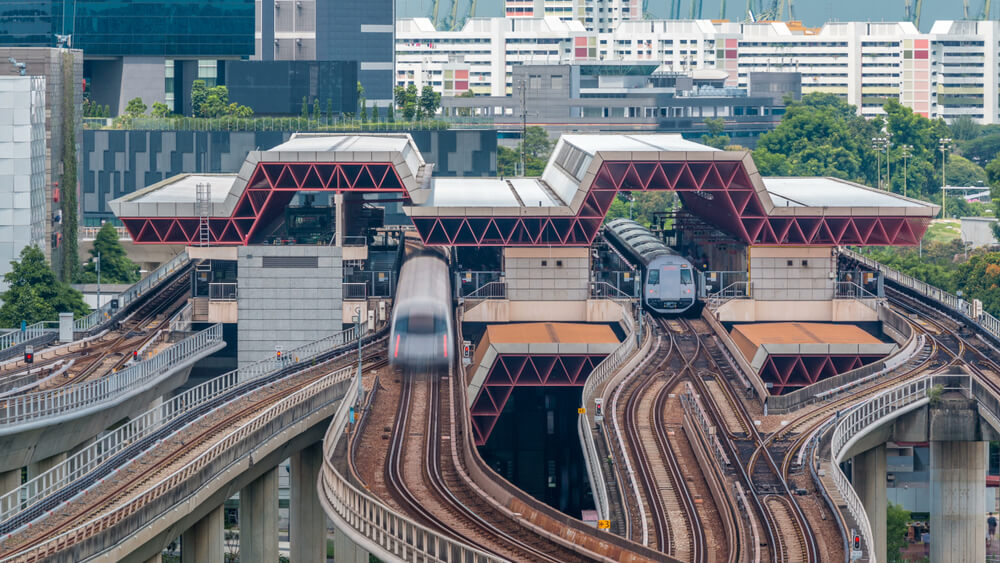
2) Swap driving for public transport
Last year, statistics from the Land Transport Authority showed a decrease in the total number of vehicles in Singapore to 957,006 – the lowest since 2016. By opting to take public transport more frequently instead of driving your own car, you can play your part in reducing harmful carbon emissions that contribute to global warming. Additionally, you would also be contributing to a more efficient transport system by reducing the number of vehicles and congestion on the road. With an expanding MRT system, getting anywhere in Singapore via public transport has never been so convenient, and will continue to get more convenient in the next few years!
2020 SMART goal: Take public transport instead of driving once a week
3) Repair your own appliances instead of throwing them away
It may seem more convenient to purchase a new item when one of your household appliances breaks down. However, it can be much more cost-effective, and environmentally friendly to try and fix it instead of readily throwing it away. This also helps reduce e-waste, which can lead to harmful effects on our environment.
Not sure how to fix an appliance? Bring it to one of the monthly sessions by hosted by our ChangeMakersSG partner, Repair Kopitiam, at any of their three locations in Ang Mo Kio, Jurong or Tampines, where their repair coaches can demonstrate and teach you some simple skills to breathe new life into your household appliances.
2020 SMART goal: Repair 2 household appliances in 2020, instead of throwing them away

4) Pass on your old clothes and purchase second-hand pieces
Make it a point to buy less (or not at all!) new clothes this year. Instead, consider purchasing second-hand items from retailers such as our ChangeMakerSG partner, REFASH, which provides a marketplace for women to sell clothes that no longer fit, and purchase second-hand pieces (some even have their original tags on) from others. Similarly, pass on your old clothes instead of throwing them away to reduce textile wastage.
2020 SMART goal: Reduce purchases from retailers by 50% by June
5) Turn off all vampire plugs
Did you know? Leaving that microwave oven or television on standby draws large amount of electricity. A simple action of making it a habit to turn them off at the source can save not only your electricity bills but the Earth too.
2020 SMART goal: Upon leaving the office or your home, ensure all your appliances are switched off at the main plug
6) Switch to a green energy supplier
Last but not least, take the leap this year to switch to an electricity supplier that can provide a greener option to help you cut down your carbon footprint in 2020. At Geneco, we help our customers achieve this with two of our plans – “Get It Green”, which provides a carbon neutral option to offset the impact of our customer’s electricity usage, and “Get Sunny”, a clean energy option where we harness the goodness from our sun.
From now till 29 February, apply our promo code HUAT38 when you sign up for either of the two plans to enjoy a $38 rebate. If you are an existing customer, share this promotion with your friends and get them to come on board too and you will be rewarded for your referrals! You will receive $20 rebate for each friend that successfully signs up with your contact number as the referral code. In addition, participate in our CNY Special Referral Bonus Programme and earn up to $2,020 in bonus rebates when you refer more friends.
2020 SMART goal: Switch to Geneco’s Get It Green or Get Sunny plans in 2020!
References:
- Elangovan, N. (2020, June 5) Singapore households generated additional 1,334 tonnes of plastic waste during circuit breaker: Study, Today Online.
https://www.todayonline.com/singapore/singapore-households-generated-additional-1334-tonnes-plastic-waste-during-circuit-breaker
Image Credits: Nylon Coffee Roasters
Source: The Sustainability Project
12 Sustainable Gift Ideas and Tips for Christmas
- Home
- Residential
- Blog
- Archive by Category "Knowledge" (
- Page 9 )
[Post Date]
12 Sustainable Gift Ideas and Tips for Christmas

Christmas is right around the corner! As we approach this season of giving, we must not forget to be environmentally responsible and reduce our waste as much as possible. Christmas is a wonderful opportunity to share some gifts with your loved ones that can encourage them to adopt a greener lifestyle.
Here are some gift ideas that can help your peers kickstart the environmentally-responsible lifestyle:
1) Kickstart an eco-friendly journey with with a reusable collapsible cup
Have a friend who is always out on coffee runs? Gift them a collapsible cup. Not only does it help reduce the amount of plastic waste, but it is also storage-friendly and stylish as well. With many places offering Bring-Your-Own-Cup discounts now, everyone’s a winner!
2) Hand-painted Mugs
Mugs are usually seen as “boring” or “lazy” christmas gift exchange options. You can change this view by personalising a mug for a friend! Bring out the paintbrushes and put on your artist cap to give a plain mug a new look by hand painting it with any design you can think of. You can even use old nail polishes instead of paint. Your imagination is the limit with this special gift that will certainly be appreciated by your friends.
Want to go the extra mile? Make your own gifts with material you have at home instead of purchasing new items for added sincerity and sustainability!

Photo Credits: CULTU-RE EXPERIMENT
3) DIY Tote Bag for grocery runs
If you have an old t-shirt lying around at home, consider upcycling it to create a unique tote bag that can be used for grocery shopping. With a few simple steps, you can give a close friend or family member a one-of-a-kind tote bag that is both unique and personal. You can even further decorate it with some drawings or stickers!
4) DIY Body Scrub
Add a layer of closeness to your relationship with your loved ones with some homemade body scrubs. These are easy to make, and not only gentle on the skin, but also on the environment. These DIY body scrubs are guaranteed to be fully organic and beneficial for the body, a wonderful way to express your love for the recipient. To keep up with the theme of sustainability, store the scrub in a recycled jar.

Photo Credits: Etsy
5) Upcycled Succulent Planter
Give your loved ones the gift of life with a succulent plant, a great way to add a touch of green to their households. These plants are beautiful to look at, and easy to take care of, making them a great decorative choice for Christmas. For a unique look, consider upcycling condiment jars or tins into planters to place your succulents in before gifting them to your family or friends.

Photo Credits: HGTV
6) Creative Christmas Tree Ornaments with Upcycled Light Bulbs
Have some faulty light bulbs at home? Don’t throw them away just yet!
With some acrylic paint and a little creativity, you can easily upcycle them and give them new life as beautiful christmas tree ornaments. These ornaments make adorable gifts as well that your friends can put up onto their christmas trees at home.
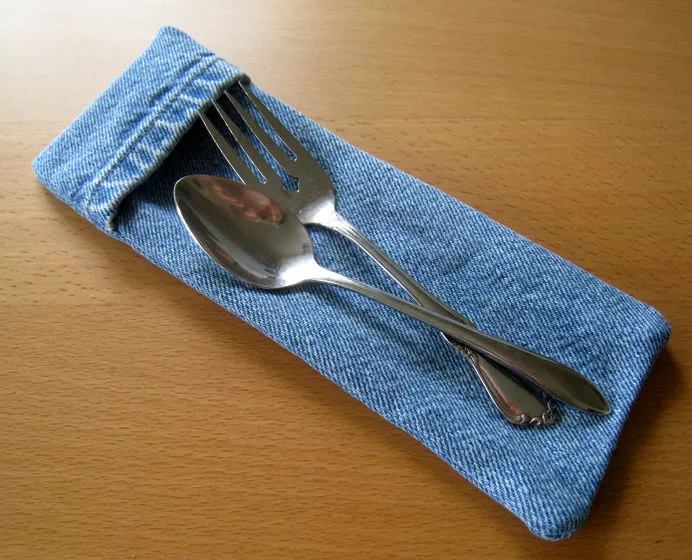
Photo Credits: Wikihow
7) Handmade Cutlery Pouches
Encourage your family and friends to ditch the disposables and cut down on plastic waste by giving them a good reason to start bringing their own cutlery around. Simply use any leftover fabric, or even old clothes, to make a pouch that can be used to keep metal cutlery or even metal straws that they can bring around with them.
8) Handmade Cookies and Cakes
Conquer both the heart and stomach with some homemade cookies and cakes. Christmas gifts don’t always have to be a useful object – they can be consumables too! Make the extra effort to bake some homemade cookies and cakes that are full of butter and love for someone you care about. Remember to put the food in a lunchbox or metal container to avoid plastic use!
9) Send E-Cards instead of Physical Cards
Consider sending an e-card instead of a physical card. The manufacturing and delivering of a physical christmas card can increase your carbon footprint. Instead, try sending an e-card instead via email. Websites like Canva are a great guide to help you create an amazing looking e-card that your family and friends can instantly receive. Furthermore, e-cards offer you a wider range of possibilities beyond the limited design options of physical cards.

10) Reduce Food Wastage
Turkeys, ribs, log cake. It is easy to get carried away while purchasing food for a christmas feast at home and ending up having to throw away a lot of leftover food. One good way to manage your food waste is to plan in advance and buy only what is needed. After the party, keep your leftovers wherever possible and save them for other meals. Encourage your guests to bring their own food containers as well to take home all the extra food.
11) Used Recycled Paper to Wrap your Gifts
Did you know that most wrapping papers cannot be recycled? The usage of wrapping paper for christmas gifts each year contributes to our generated waste, and you can help by choosing to use other options to wrap your gifts. Consider upcycling old magazines or newspapers that you no longer read as wrapping papers for a colourful and rustic look. You can also opt to paint over the paper with acrylic paint for some DIY wrapping paper!
12) Conserve Energy and Opt for Greener Options
A lot of electricity can be consumed during the christmas period as we light up our christmas trees. Switch to LED lights for your christmas lights – not only do they use less energy than the usual incandescent christmas lights, they also emit lesser greenhouse gases than incandescent bulbs, making them not only more energy-efficient, but also much more environmentally-friendly.
To go the extra mile, also consider if your electricity plan is environmentally-responsible. Consider electricity plans such as Geneco’s “Get It Green” carbon-neutrality plan or the “Get Sunny” solar energy plans.
References:
- Elangovan, N. (2020, June 5) Singapore households generated additional 1,334 tonnes of plastic waste during circuit breaker: Study, Today Online.
https://www.todayonline.com/singapore/singapore-households-generated-additional-1334-tonnes-plastic-waste-during-circuit-breaker
Image Credits: Nylon Coffee Roasters
Source: The Sustainability Project
Your Guide To Geneco's Electricity Bill
- Home
- Residential
- Blog
- Archive by Category "Knowledge" (
- Page 9 )
[Post Date]
Your Guide To Geneco’s Electricity Bill
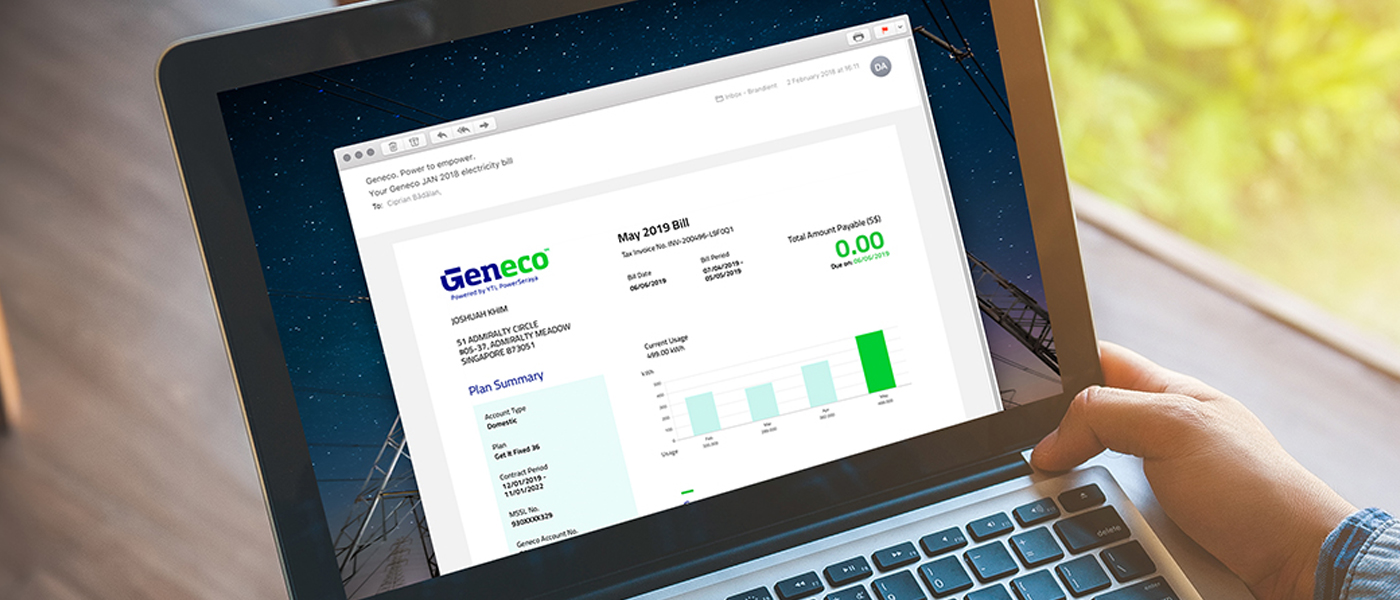
Bills are part and parcel of your monthly routine. At Geneco, we try to keep this as hassle free as possible with our simple bill to assist in you finding the information that are important to you.
Understanding Your Geneco Electricity Bill
1. Bill Summary
This shows you the bill date, the amount payable and the billing period of your current bill.
2. Plan Summary
This section shows the plan that you have signed and all of the information (Geneco Account Number, Contract period) regarding your account with Geneco.
3. Summary of Charges
This portion gives you a view of your balance brought forward from the previous month and the current charges during this billing period.
4. Geneco Rebate Summary
This section informs you on your Geneco rebate and how much rebates are available after deducting from your recent bill.
5. Breakdown of Charges
This section gives you a detailed view of your electricity consumption during the billing period, the rebates that have been offset against your electricity usage for the billing period and other charges or promotions applied.
6. Payment Options
This shows you the list of payment options you can use to make your bill payment. If you are still on one-time payment, why not set it to a recurring payment?
7. Green Tip
Our team has gathered various tip for you to reduce your electricity consumption! If you have any tips that you would like to share, you can write it to us too!
8. Bar Code
This Bar code allows you to scan to pay using AXS machines across Singapore. Do note that this bar code is unique to your Geneco Account.
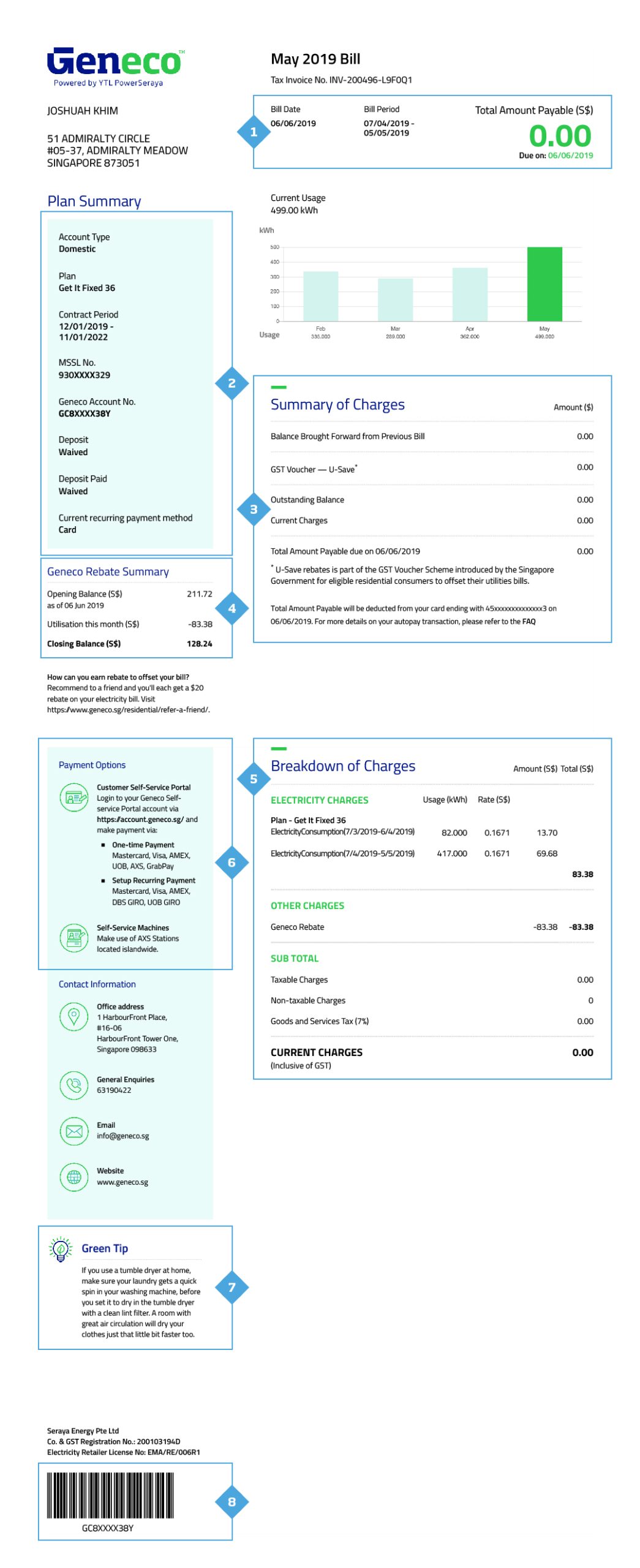
When will I get my first electricity bill?
If you are receiving your Geneco bill for the first time, your first bill will be available on the Geneco Self-Service Portal approximately 45 days to 60 days after your contract start date.
Why does my Geneco bill do not have any non-electricity charges?
Your Geneco bills are for electricity charges only. For non-electricity charges, please refer to your SP Group’s bill for non-electricity charges.
How to convert your Geneco bill into PDF format?
We hear from you that you would like to have your Geneco bill in PDF format but did you know, you can convert your Geneco bill into PDF format as well by just following this 3 easy steps.
- Install a PDF reader on your device. If you have a PDF reader installed, you can ignore this step.
- Press ‘CTRL’ + ‘P’ on the browser with your bill.
- On the left of the dialog box, on the destination, select “Save as PDF” and click save.
Your bill in PDF format will be available for you on your desktop.
Got a question on your electricity consumption?
Find out more here to understand why you might see an increase on your consumption.
References:
- Elangovan, N. (2020, June 5) Singapore households generated additional 1,334 tonnes of plastic waste during circuit breaker: Study, Today Online.
https://www.todayonline.com/singapore/singapore-households-generated-additional-1334-tonnes-plastic-waste-during-circuit-breaker
Image Credits: Nylon Coffee Roasters
Source: The Sustainability Project
Going Natural with Homemade Cleaners
- Home
- Residential
- Blog
- Archive by Category "Knowledge" (
- Page 9 )
[Post Date]
Going Natural with Homemade Cleaners

The ingredients may just be sitting in your pantry and it may be just as effective as those store bought cleaners.
With the new year approaching, spring cleaning will definitely be on everyone’s agenda. Before you head down to the supermarket to buy that new multi-purpose cleaner, you may want to look around your pantry first. A couple of key ingredients to that effective homemade cleaner may just be sitting right there.
Why should you make your own home-cleaning products?
Homemade cleaners are beginning to gain traction among households and here are some reasons why as to the rise in their popularity.
Making your home safer
By making your own cleaners, you are opting for a non-toxic option and you know what goes into your cleaning solution. Many conventional cleaning products come with a long list of ingredients that are not recognisable and that can be downright dangerous.

Some of the ingredients used in conventional cleaning are allergies or asthma triggers. Reduce the use of unnecessary chemicals to make your home safe for your family.
Parents can also have an ease of mind by putting together their own cleaning solutions with natural ingredients. Children and pets are especially vulnerable due to higher exposure levels because of their size. With homemade cleaning solutions, parents do not have to worry if their child gets too close. They can even give them a sponge with a squirt of homemade cleanser and imitate their cleaning actions.
Cleaning your home at a fraction of a price

Homemade cleaning solutions surprisingly require only a couple of key ingredients. All you need may be some lemon, baking soda and vinegar to make that cleaning solution to get all the dirt out. These are essentially the three magic ingredients that can clean just about anything if you think they may not be as effective as store bought cleaners.
Read on to see how you can make some for yourself
Helping the Environment

Making your own cleaning products is a step towards an even more sustainable lifestyle. Some conventional cleaning products contain ingredients that are toxic, hazardous and non-biodegradable. Many of which come from non-renewable resources like petroleum and adversely affect our planet’s ecosystem.
How to make your own own cleaning products?
All-purpose cleanser
Ingredients:
- 8 tbsp vinegar
- 4 tbsp baking soda
- 1 litre of water
- Lemon rinds (optional)
Mix the vinegar and baking soda with water and shake it all up. Pour it into your own spray bottle to create your own all-purpose cleanser.
You can use it to remove water stains in the shower, clean any surface and make it smell nice with an added touch of lemon. It not only makes it smell good, but has additional cleaning properties

Drain unclogger and drain freshener
Ingredients:
- 1 cup baking soda
- ½ cup warm white vinegar
- 1 tbsp salt
If your drain is clogged or is beginning to smell this natural recipe will remove the clog and freshen up. Mix baking soda and salt and pour down the drain. Warm the vinegar, pour down the drain then immediately plug up to keep it all inside the drain. Leave for half an hour then run through hot water for a few minutes. Might need to repeat in some cases.
Window cleaner
Ingredients:
- ¼ cup of white vinegar
- 1 tbsp of cornstarch
- 2 cups of warm water
This mixture will clear your windows and make sure you its streak free.

Bathroom cleaner
Ingredients:
- 2 cups of water
- 3 tbsp white vinegar
- 20 drops of tea tree oil
Get your toilet smelling clean with this solution as you mix it up and use a sponge or cloth to keep it spick and span during your weekly clean.
Green Living at Home
Making small changes around the house can really add up to make a difference as a whole. Opting for homemade natural cleaning products not only have positive impacts for your family and home in the long run, but also for the earth. You can also make a conscious effort by opting to save electricity and and learn how to cool your home naturally as well. We promise that it will help you fight the heat.
References:
- Elangovan, N. (2020, June 5) Singapore households generated additional 1,334 tonnes of plastic waste during circuit breaker: Study, Today Online.
https://www.todayonline.com/singapore/singapore-households-generated-additional-1334-tonnes-plastic-waste-during-circuit-breaker
Image Credits: Nylon Coffee Roasters
Source: The Sustainability Project
Plastic Pollution in Singapore - What Is It And Why Does It Matter
- Home
- Residential
- Blog
- Archive by Category "Knowledge" (
- Page 9 )
[Post Date]
Plastic Pollution in Singapore – What Is It And Why Does It Matter

Last week, Singapore’s National Environment Agency (NEA) shared some alarming data on plastic waste in Singapore. Out of 949,300 tonnes of plastic waste generated in 2018 (any comparison we can give? For example weight of like 5000 buses or something), 96% of these were incinerated and dumped at Pulau Semakau. The more worrying trend is that this number is 2% less than 2017, and less than half that of five years ago.
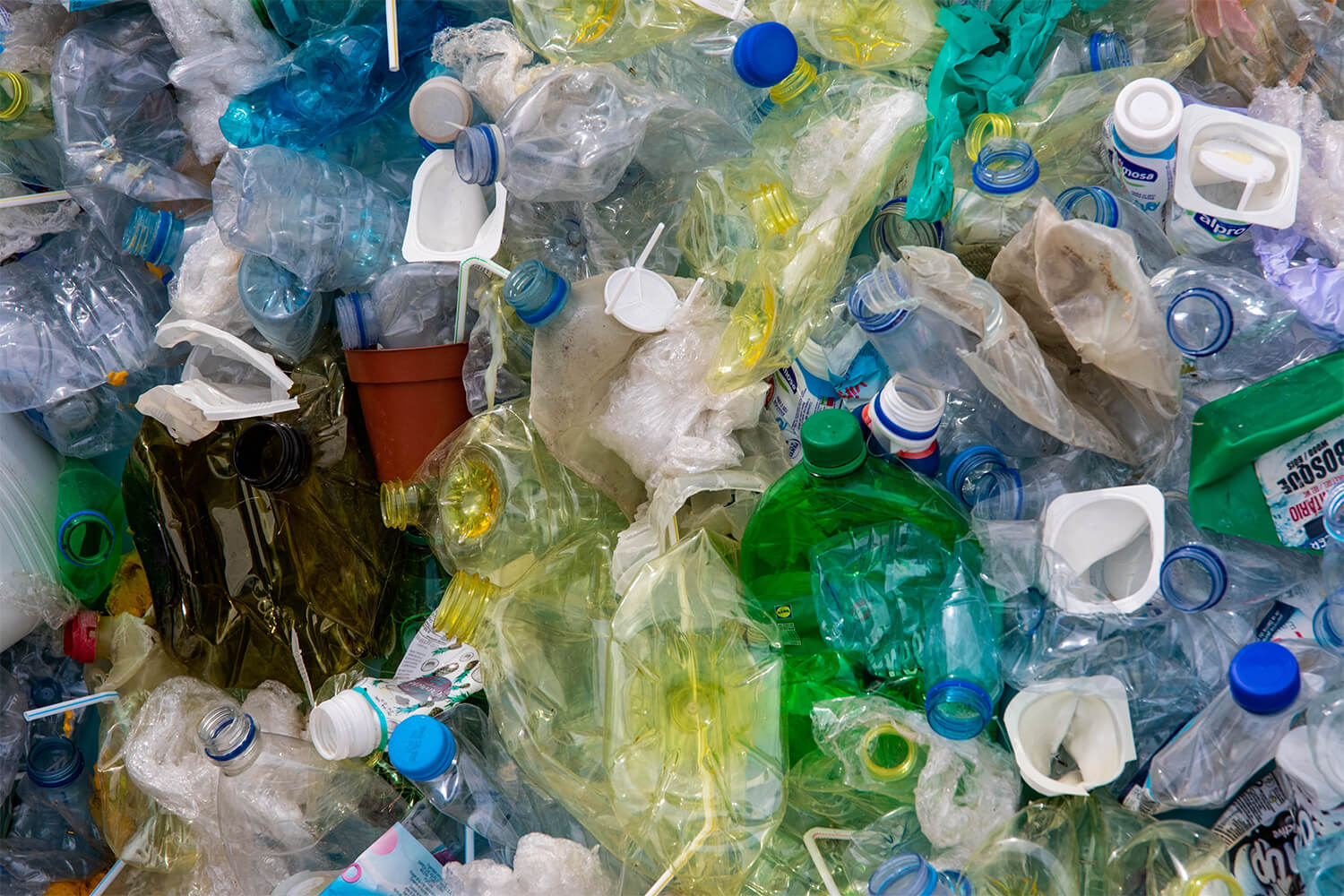
How much plastic waste have you generated so far today?
Plastics are among the most common forms of waste not just in Singapore, but around the world. Every day, we see plastic being used across almost all aspects of our lives. From food wrappers to straws and plastic bags, it is almost impossible for us to completely avoid any plastic usage. While some of these plastic items can be reused, most of it ends up being thrown away, resulting in plastic waste that is usually non-biodegradable and can’t be recycled.
Why Does It Matter?
In Singapore, non-recyclable materials are incinerated, before being dumped at Pulau Semakau, an offshore island. With an increasing rate of plastic usage in Singapore, Pulau Semakau is now quickly filling up. At our event with Repair Kopitiam last month to launch their third site, Dr. Amy Khor, Senior Minister of State for the Environment and Water Resources, shared that Singapore generated 8 million tonnes of waste just last year alone, equivalent to 530,000 double decker buses. At this rate, we will be filling Semakau landfill by 2035, and it will be difficult to find an alternative solution when that happens.
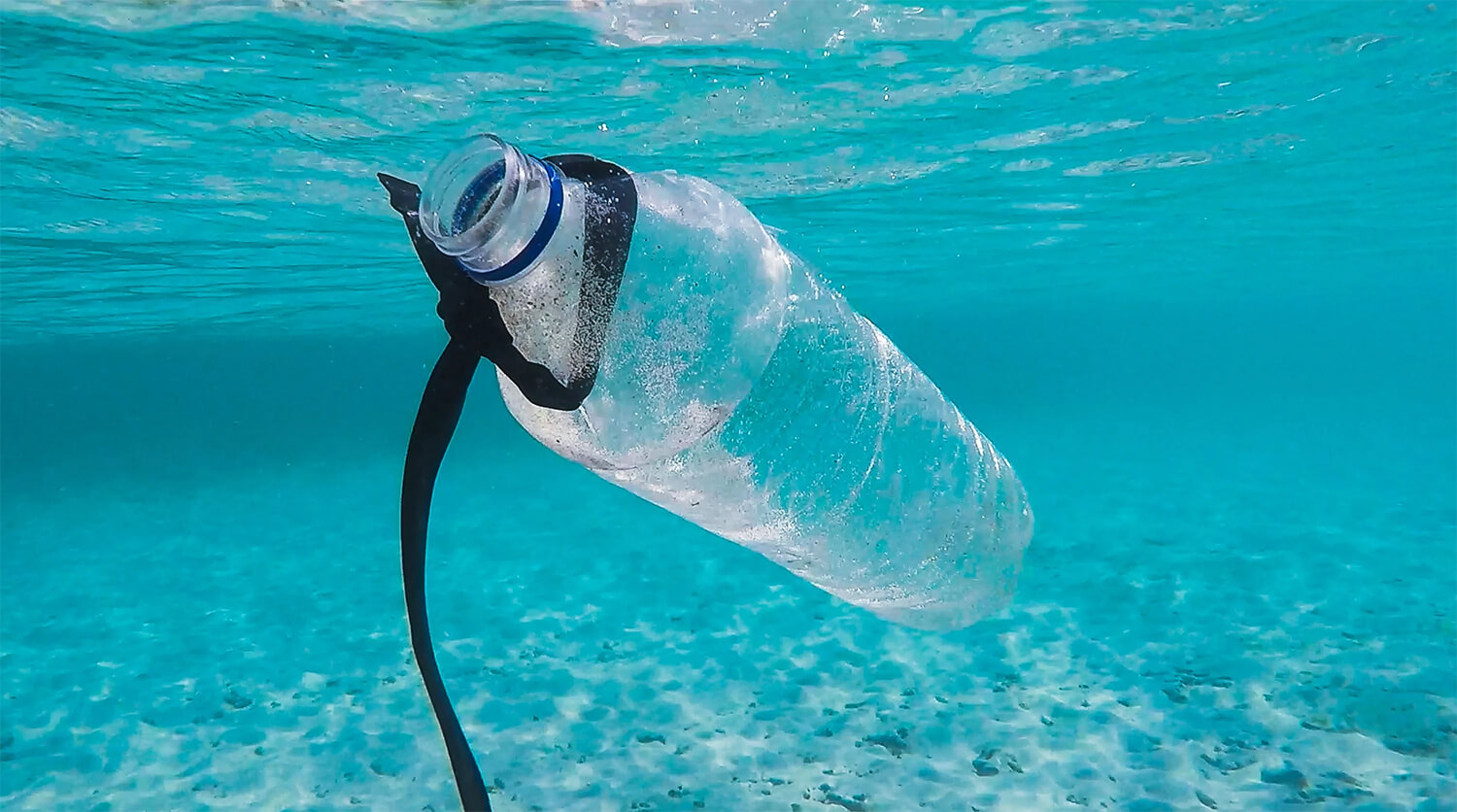
Besides the immediate land pollution implications, burning plastic waste is also a huge contributor to air pollution. Without the right measures, the incineration of plastic waste can result in harmful toxic gases being released into the air.
And this is only the case if the plastics are properly disposed.
While most of us may be considerate enough to dispose of our plastic waste properly, it is inevitable that some of these plastic waste end up in our surrounding waters. This is extremely harmful for our beautiful marine life who may accidentally swallow the plastic or be caught in them, and this problem has since come back to haunt us.
In fact, statistics from the World Wildlife Foundation (WWF) Singapore have revealed that one-quarter of the fish that we consume have plastics in their guts, and 83% of tap water samples contain plastic in them. These are worrying numbers, as they show that plastic pollution is not only harming the environment around us, but also threatening our lives and our future generations.

What Can I Do?
To help combat the threat of plastic pollution, you can play your part by reducing your daily plastic footprint. It may be cliche, but everyone has their part to play, and influencing those around you with your actions will go a long way in shaping a better tomorrow for ourselves.
To get started, here are some simple ways you can cut down on your plastic usage:
1) BYOB (Bring Your Own Bag)
When shopping for groceries or other products, bring your own shopping bags to avoid having to use plastic bags at shops. A nice tote bag can actually be more durable than the average plastic bag, and even provide an aesthetic boost! If you do end up using a plastic bag for your shopping, be sure to keep it for future usage instead of throwing it away.
2) Reusable Utensils and Kitchenware
Instead of using disposable utensils and plastic containers, bring your own reusable ones. Metal containers can be a good companion for your takeaway food, and you can even keep it warm! With a small additional hassle of washing your container and utensils, you can do a big part in cutting down plastic usage. The same applies for plastic straws, and metal straws are becoming increasingly popular among Singaporeans as more F&B outlets are beginning to stop providing straws for customers.
3) Choose Your Packaging
With an abundance of products available in our supermarkets, you can help to promote good habits by making the right choice while buying your everyday goods. Avoid products that make use of too much plastic packaging, and support those that use alternative materials. By making this slight change to your purchasing patterns, you can send a message to the manufacturers that reducing plastic usage in their products can be beneficial to their business.
4) Reuse Your Plastics
Plastic bags can be reused to contain other items. Refrain from throwing them away immediately after just one use. Certain plastic bottles and containers can also be reused to contain other household items. Our latest changemaker, Green Nudge Singapore, goes the extra mile by repurposing plastic waste into “eco-bricks” – plastic bottles with smaller pieces of plastic stuffed in them – that can then be made into improvised furniture such as stools and tables.
#PlasticFreeGeneco
At Geneco, we strive to be more than just a power retailer, but a partner to our users in the larger ecosystem. We want to bring positive energy to our community, and contribute to powering the change in people to adopt better habits. Visit our Changemakers website to find out more about what organisations like Green Nudge are doing to help Singapore become a greener and better place to live in.
By doing our part against plastic pollution, we are taking charge of our own future and helping to improve our ecosystem, keeping it beautiful, clean and green for the years to come. Making small changes to your daily lifestyle to reduce your plastic usage can go a long way in changing the world around you. Start today!
Besides your plastic footprint, think about reducing your carbon footprint as well. You can begin by signing up for Geneco’s carbon-friendly “Get It Green” and “Get Sunny” plans.
References:
- Elangovan, N. (2020, June 5) Singapore households generated additional 1,334 tonnes of plastic waste during circuit breaker: Study, Today Online.
https://www.todayonline.com/singapore/singapore-households-generated-additional-1334-tonnes-plastic-waste-during-circuit-breaker
Image Credits: Nylon Coffee Roasters
Source: The Sustainability Project
